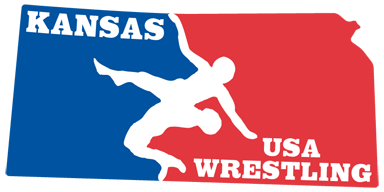How the APR Might Effect Wrestling Programs & Recruiting
With the APR, recruiting the “best” athlete could do your program more harm than good.
Regardless of the potential athlete’s performance on the field, the mat or the court, if they become ineligible, not only do you lose their participation, that same athlete could cost the program dearly by contributing to lost scholarships.
Wrestling coaches will probably assume the dual role of admissions officer and talent scout. If the desired effect of the APR is to increase graduation rates, then coaches and their recruiting staff must weigh the athlete’s performance potential against their graduation potential.
For programs that have fallen below or are dangerously close to the .925 threshold, coaches may opt to recruit some athletes with a higher graduation potential than those who might be more talented. Only time will tell, but there is an initiative to set aside funds to help under-performing schools get additional counseling on how to meet the higher academic standards required by the APR.
After spending 18 months wading through the college admissions and recruiting process, I can tell you this first hand. There are two things that colleges must decipher from all the data on a prospective student’s admissions application….
Can they do the required work and will they graduate.
NCAA's APR changes could cause uptick in fraud, more problems Story Highlights
NCAA president Mark Emmert has placed importance on education for athletes
An increased APR average caused 10 teams to be banned for the 2013 postseason
APR changes likely to increase academic fraud as players try to remain eligibile
Danny Johnston/AP
If there is anything that we have learned about Mark Emmert during his tenure as NCAA president, it is that ensuring the education of collegiate athletes is of the utmost importance to him.
It starts with higher requirements for incoming freshmen. Beginning in 2015, incoming recruits must have a minimum GPA of 2.3 in their 16 core courses with a corresponding SAT/ACT score that sits on a sliding scale. For example, a recruit with a 2.5 GPA needs to get a score of at least 1,000 on the SATs to be eligible. Higher grades mean lower required SAT scores, and vice versa. The NCAA also required 10 of the 16 core courses to be completed before the start of the student's senior year in an effort to prevent emergency summer school sessions that are used for initial eligibility purposes. For incoming junior college transfers, the requirements are even more stringent, as the athletes need a GPA of at least 2.5 on their transferable credits.
Read more:
http://sportsillustrated.cnn.com/2012/wr...l#ixzz20Uyy2XaKClick here to download a copy of the NCAA APR Directive
Click here to check which schools have been subject to recent penalties.
Click here for the latest Academic Performance Rate (APR) data on any NCAA School.
Here is the NCAA’s definition of the APR:
NCAA Academic Performance Rate (From NCAA APR Directive) - The NCAA Division I Academic Progress Rate (APR) is a metric that awards points for academic eligibility/graduation (E) and retention (R). Eligibility is important as it measures a student's progress toward a degree at regular intervals. Retention is a crucial part of the APR.
NCAA Example for Calculating the Academic Performance Rate:
Schools earn "points" for each player eligible at the beginning and end of each semester. For example, a player who is eligible at the beginning and end of each semester during a given academic year earns four "points" (4 for 4). If a player is eligible and is retained after the first semester but does not return for the following fall and is ruled ineligible, his number would be 2 for 4.
Division I basketball teams are allowed a maximum of 13 scholarships. If 11 players at State U. achieve a 4 for 4 and two achieve a 2 for 4 (0 for 2 second term, they were not eligible and were not retained), this team lost four points total based on the performance of these two student-athletes.
The maximum number of points possible would be 52 (13 scholarships x 4 points).
(11 players x 4 for 4 = 44) + (2 players x 2 for 4 = 4) = 48 points. 48/52 equals .923 x 1000 = 923. State U. would then be below the APR cutoff of 925.
Universities get points for each athlete on the team that is academically eligible at the beginning and end of each semester. An athlete that is eligible at the beginning and end of each semester during each academic year gets four points 4 out of 4. If a player is initially eligible and remains eligible after the first semester but does not return for the following fall and is ruled ineligible, the points earned for that athlete would be 2 out of 4.







